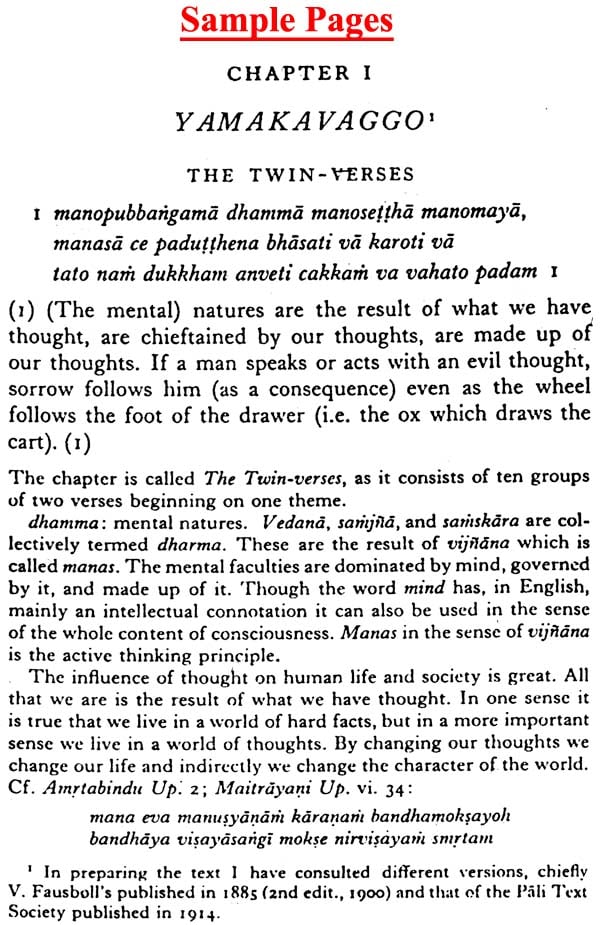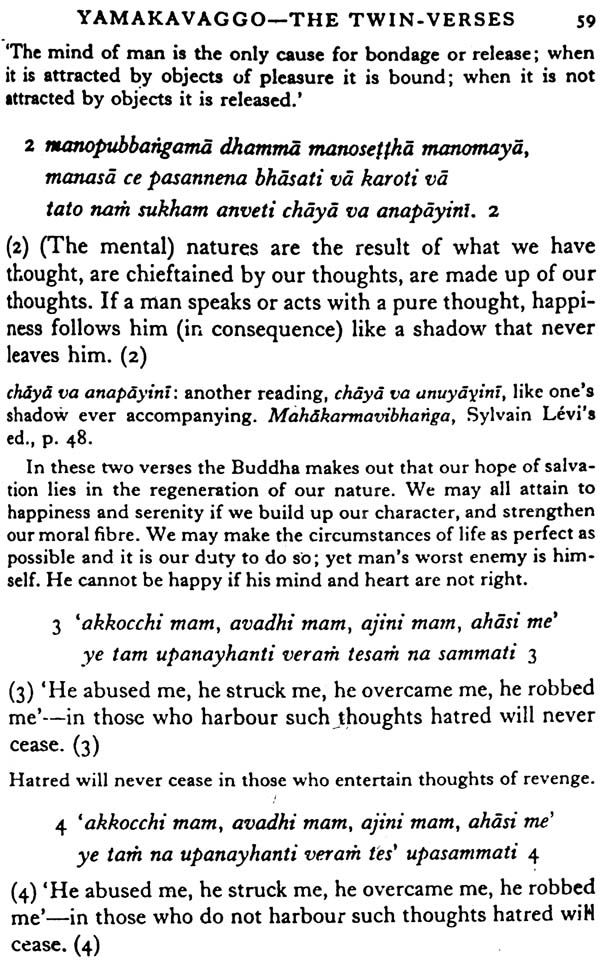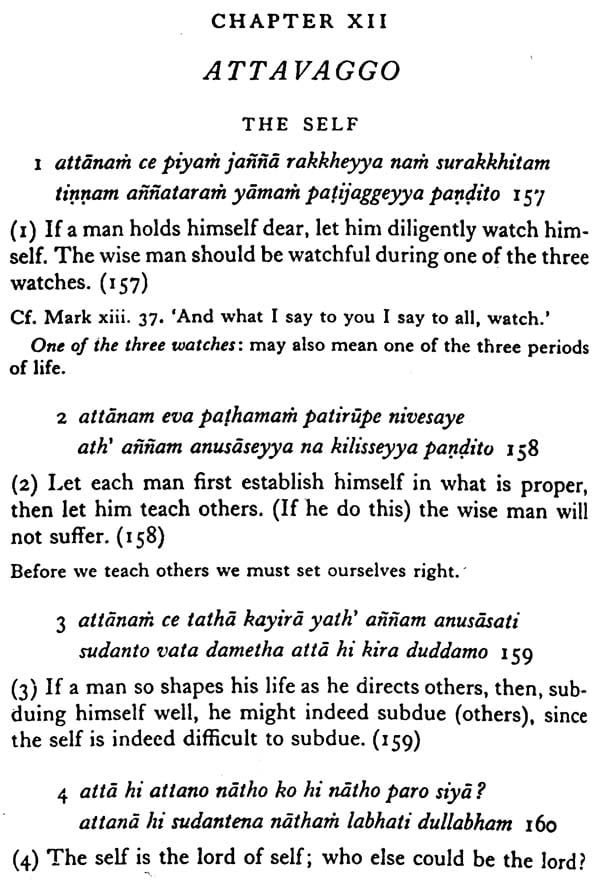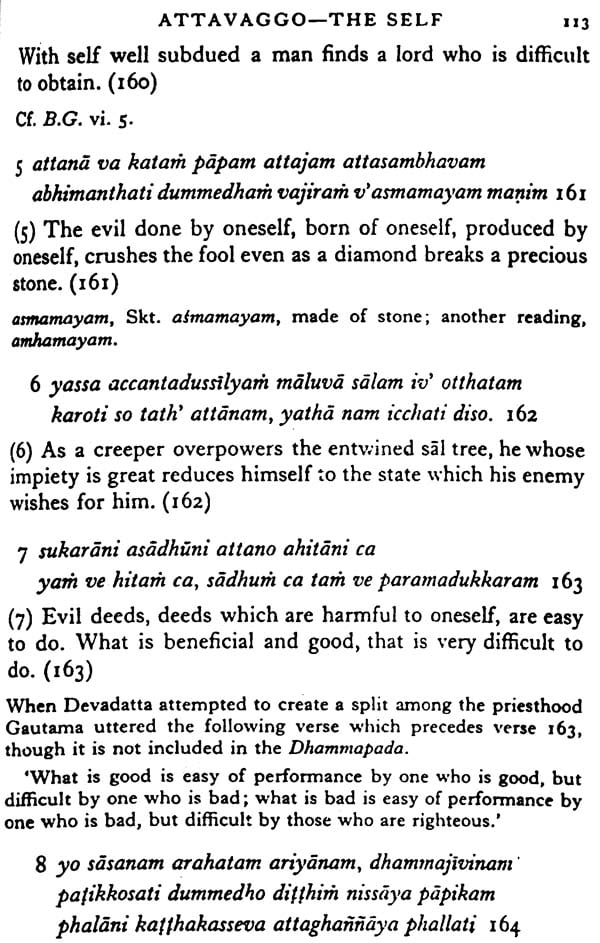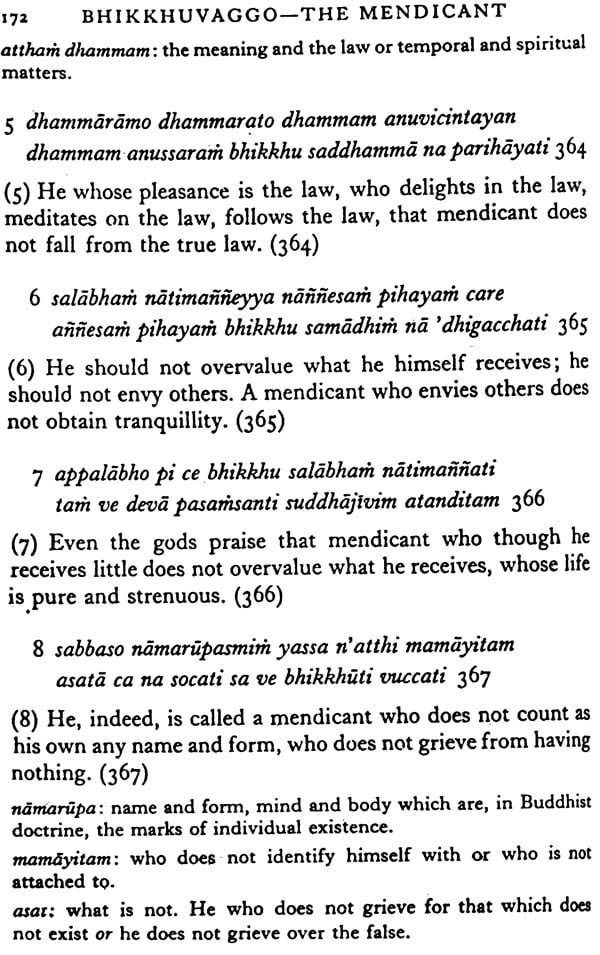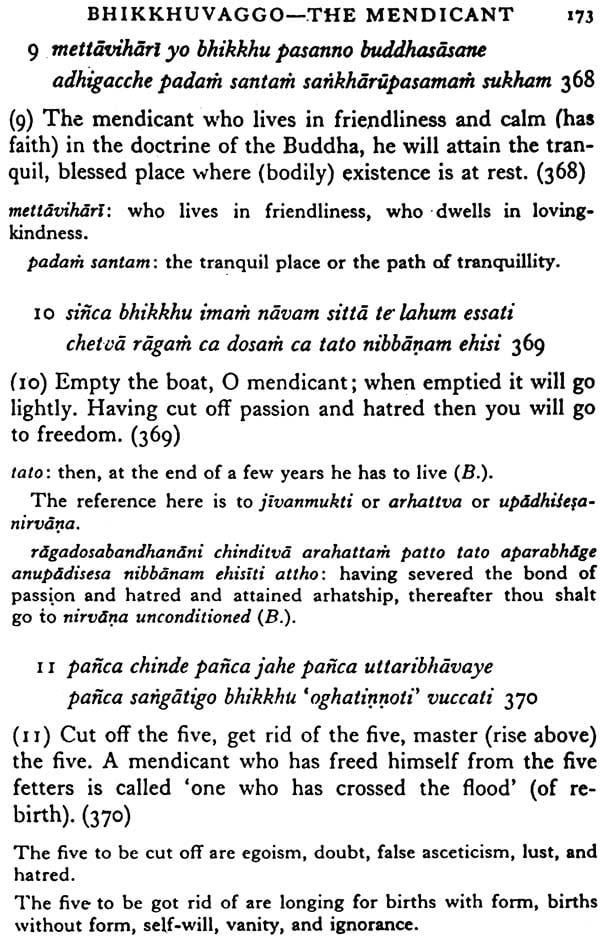
The Dhammapada (with introductory Essays, Pali Text, English Translation and Notes)
Book Specification
| Item Code: | NAI128 |
| Author: | S. Radhakrishnan |
| Publisher: | Oxford University Press, New Delhi |
| Language: | Transliterated Text, English Translation and Explanation |
| Edition: | 2013 |
| ISBN: | 9780195640809 |
| Pages: | 200 |
| Cover: | Paperback |
| Other Details | 8.5 inch x 5.5 inch |
| Weight | 190 gm |
Book Description
Preface
The tree of civilization has its roots in spiritual values which most of us do not recognize. Without these roots the leaves would have fallen and left the tree a lifeless stump. In the history of civilization it has been the privilege of Asia to enrich the mind of the world with the noblest content of spiritual values. She has been brought into more or less direct contact with Europe-the Persian Empire, which included a part of India and Greece, the invasion of the East by Alexander, Asoka's missions to the West, the Roman Empire, which extended over a part of Asia, the Moors in Spain, and the Crusades-and each time she has left her mark on Europe.
To-day there is a world-wide renaissance. 'We have come to recognize that it is either one world or none. The effort to build one world requires a closer understanding among the peoples of the world and their cultures. This translation of the Dhammapada, the most popular and influential book of the Buddhist canonical literature, is offered as a small contribution to world understanding. The central thesis of the book, that human conduct, righteous behaviour, reflection, and meditation, are more important than vain speculations about the transcendent-has an appeal to the modern mind. Its teaching-to repress the instincts entirely is to generate neuroses; to give them full rein is also to end up in neuroses is supported by modern psychology. Books so rich in significance as the Dhammapada require to be understood by each generation in relation to its own problems. The Introductory Essays and the notes may be found useful from this standpoint.
The second Introductory Essay on Gautama the Buddha is reprinted with the kind permission of the British Academy from the Proceedings of the British Academy, Volume XXIV, being the Annual Lecture on a Master Mind delivered on 28 June 1938.
I am deeply grateful to my friend Professor F. W. Thomas for his kindness in reading the proofs and making many valuable suggestions.
Contents
| | PREFACE | |
| | LIST OF ABBREVIATIONS | |
| | INTRODUCTION | |
| I. | THE DHAMMAPADA | 1 |
| II. | GAUTAMA THE BUDDHA | 3 |
| | TEXT, TRANSLATION, AND NOTES: | |
| I. | THE TWIN-VERSES | 58 |
| II. | VIGILANCE | 66 |
| III. | THOUGHT | 70 |
| IV. | FLOWERS | 74 |
| V. | TII E FOOL. | 79 |
| VI. | THE WISE MAN | 84 |
| VII. | THE ARHAT (THE SAINT) | 89 |
| VIII. | THE THOUSANDS | 93 |
| IX. | EVIL CONDUCT | 98 |
| X. | PUNISHMENT | 102 |
| XI. | OLD AGE | 108 |
| XII. | THE SELF | 112 |
| XIII. | THE WORLD | 115 |
| XIV. | THE BUDDHA (THE AWAKENED) | 119 |
| XV. | HAPPINESS | 125 |
| XVI. | PLEASURE | 128 |
| XVII. | ANGER | 131 |
| XVIII. | IMPURITY | 135 |
| XIX. | THE RIGHTEOUS | 140 |
| XX. | THE PATH | 145 |
| XXI. | MISCELLANEOUS VERSES | 151 |
| XXII. | THE DOWNWARD COURSE (HELL) | 156 |
| XXIII. | THE ELEPHANT | 160 |
| XXIV. | THIRST (OR GRAVING) | 164 |
| XXV. | THE MENDICANT | 171 |
| XXVI. | THE BRAHMIN | 177 |
| | SELECTED BIBLIOGRAPHY | 188 |
| | PALI INDEX | 189 |
| | GENERAL INDEX | 193 |
